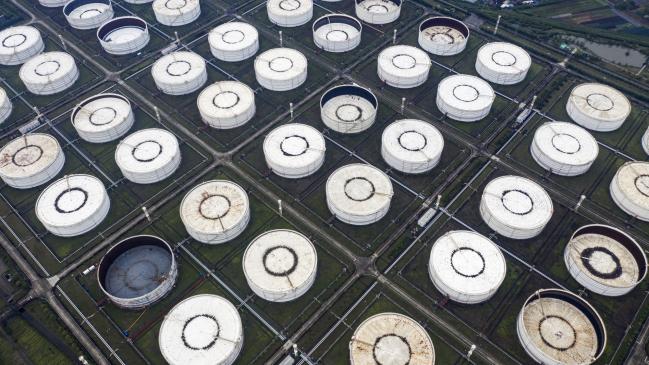(Bloomberg) -- Global oil markets have returned to surplus and face an even bigger oversupply early next year as the omicron variant impedes international travel, the International Energy Agency said.
Supplies are rebounding around the world -- from the current OPEC+ ramp-up and sales from strategic reserves, to record output in the U.S., Canada and Brazil next year -- the IEA said. With jet fuel demand also faltering amid the new virus strain, global oil inventories could swell at a rate of 1.7 million barrels a day in the first few months of 2022.
“Much-needed relief for tight markets is on the way, with world oil supply set to overtake demand starting this month,” the Paris-based agency said in its monthly report. “The steady rise in supply, combined with easing demand, has considerably loosened our balances.”
Oil prices have held up so far amid the emergence of the new Covid strain, trading just below $75 a barrel in London, as fuel use has yet to suffer a major hit. Overall, the IEA sees a muted impact of just 100,000 barrels a day on next year’s fuel consumption as vaccination campaigns limit the spread.
“The surge in new Covid-19 cases is expected to temporarily slow, but not upend, the recovery in oil demand that is under way,” it said.
But the combination of a seasonal pullback in fuel demand, deepened by the effects of omicron and coupled with resurgent supply, is setting the market up for a potential glut early next year. The IEA lowered forecasts for global oil demand in the first quarter by 600,000 barrels a day.
The 23-nation OPEC+ alliance led by Saudi Arabia and Russia has agreed, with some persuasion from U.S. President Joe Biden, to press on with restoring production it halted during the pandemic. Meanwhile, the U.S. and other consumers are set to release barrels from emergency reserves after deciding that OPEC’s increases didn’t go far enough.
At the same time, producers besides the Organization of Petroleum Exporting Countries and its partners are ramping up output toward all-time highs -- namely the U.S., Brazil and Canada, according to the IEA. American production jumped by 340,000 barrels a day in November amid continued gains offshore, and as higher prices allowed shale explorers to boost drilling.
©2021 Bloomberg L.P.

